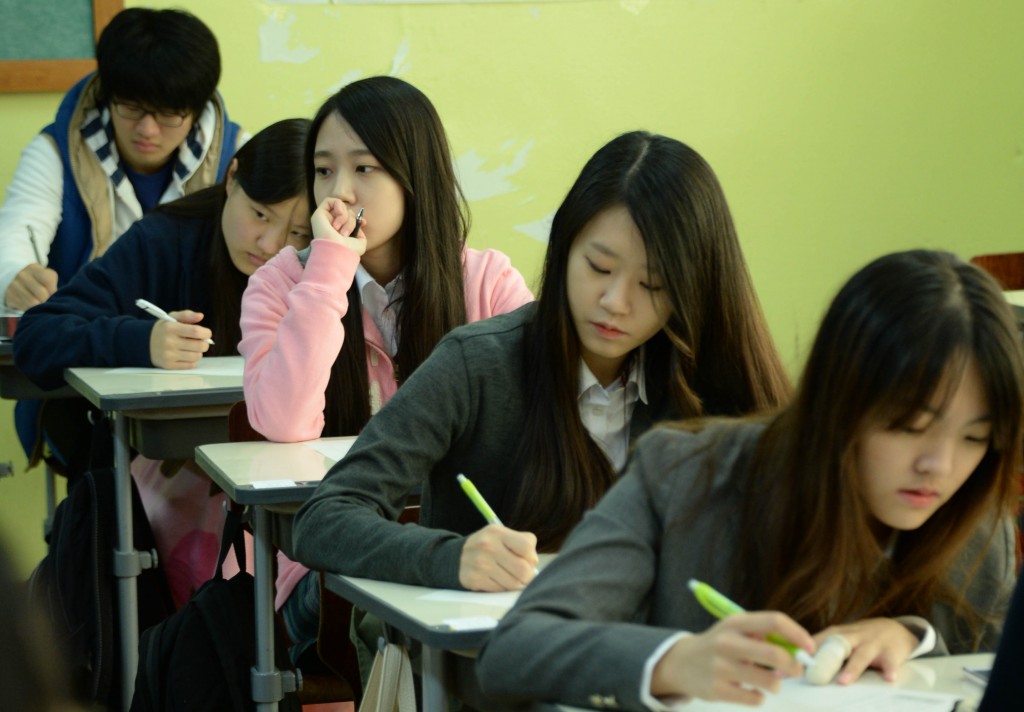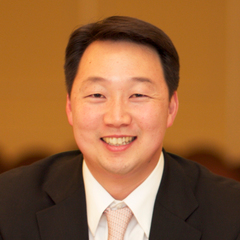- California Assembly OKs highest minimum wage in nation
- S. Korea unveils first graphic cigarette warnings
- US joins with South Korea, Japan in bid to deter North Korea
- LPGA golfer Chun In-gee finally back in action
- S. Korea won’t be top seed in final World Cup qualification round
- US men’s soccer misses 2nd straight Olympics
- US back on track in qualifying with 4-0 win over Guatemala
- High-intensity workout injuries spawn cottage industry
- CDC expands range of Zika mosquitoes into parts of Northeast
- Who knew? ‘The Walking Dead’ is helping families connect
Why do straight-A students tend to have low SAT scores?
By Danny Byun, Counseling Chief of FLEX College Prep
Throughout middle school and freshman year of high school, James was a straight-A student. He never struggled with his class work, his teachers praised him, and his report cards were impeccable. Then sophomore year began and James took his first AP classes. Suddenly, he began to have difficulty with his classes. His grades began to suffer. Additionally, when he took a practice SAT, his scores were surprisingly low. When his parents enrolled him in SAT prep classes, they were disconcerted to find how difficult he seemed to find the work.
The story of James rings all too true for many Asian families. Many parents are taken off-guard as their student begins to have difficulty in high school classes and standardized test prep. Their daughter who always loved to read gets B’s in AP English. Their son who was always a year or two advanced in math suddenly can’t break a 700 on the SAT. While each individual family might feel its situation is unique, we can see a general trend among Asian families whose students are under-prepared for high school and college. One major factor is the lack of information.
A primary educational goal for many Asian families is for their students to gain admission into the best possible college. For them, it is culturally one of the highest values. However, the California public school system has a different set of values. It is not designed to help students maximize learning or to help them gain entrance into the best institutions of higher learning. Rather, the system holds to the philosophy of “no child left behind.” In other words, rather than prioritizing students at the top achieve their maximum potential, schools must prioritize those at the middle or bottom to make sure they don’t fall back. As one frustrated teacher writes, in an article that asks whether we are failing our high achievers, “Our schools are consistently failing to provide opportunities for top students to realize their potential. We are teaching to the bottom half of our classes with perhaps devastating ramifications.”
While it is important that under-privileged or under-achieving students are given the attention they need, this educational philosophy does our Asian families a disservice. For the past twenty-five years, California public schools have fallen to the bottom rank of schools across the nation. Some of the issues include:
1. Overcrowding: One out of three students attend an overcrowded school, giving California classrooms the second highest student-teacher ratio in the nation.
2. Language barriers: 1.5 million California students are identified as English learners, or non-native speakers. This represents a quarter of the entire student population in California.
3. Teacher qualification: About 1,900 schools, or 1.7 million California students, are taught by under-prepared or under-credentialed teachers.
Even seemingly minor issues such as textbook shortages and the poor condition of school facilities add to the problem.
With all these challenges, the California public school system does not have the time or resources to devote to higher-achieving students. Much of the media attention is focused on the crisis of California education at the very worst of the spectrum. In addition, the economic downturn has made remedying even these issues nearly impossible.
What Asian students often find, then, is that what was good enough for California is suddenly lacking on a national standard. Beginning in their sophomore or junior years, students are subjected to a battery of tests that measure their achievement across the nation. The SAT, SAT 2’s, AP, and IB tests measure the performance of California test-takers against that of, say, test-takers in New York or Texas (or, in the case of IB tests, against the performance of international test-takers). Suddenly, our students realize that the academic groundwork they received under the California public school system has inadequately prepared them for this level of education. Coursework also suddenly becomes more difficult as teachers “teach to the test,” holding their students to national (or international) standards that had never applied to them previously. Unfortunately, this educational shortfall will continue to cause students to play catch-up, not only in preparing for the rigors of national standardized testing but also in gaining admission to college and even in keeping up with college-level work once admitted.
What’s the solution?
Sooner rather than later, 8th and 9th graders should get assessed to see how their academic performance holds on a national standard. Weaknesses should be addressed early on, while there is time. The student who is a slow or indifferent reader should acquire efficient reading skills before tackling the large amount of reading that will be demanded of him in both humanities and science classes. The student who is a weak writer should acquire foundational writing skills before facing the long analytical essays required in his AP or IB classes. The student with a shaky grasp of math or science should solidify his understanding before moving onto the more advanced courses that build on earlier concepts. Critical thinking skills and analytics should be honed before tackling the SAT.
Because of the state of the California education system, parents and students must be willing to take a certain amount of initiative in building the academic platform that best meets their goals and needs. It takes some information and some foresight, but those who have equipped their students in such a way will find gratification in their students’ later academic success.



















Edward Shim
February 21, 2015 at 9:29 PM
Why does Koreatimes print online an essay about “education” from someone with an obvious conflict of interest? Young students should be challenged and introduced to beautiful and interesting ideas, encouraged to develop and pursue their own interests or hobbies, and, most of all, the freedom to make their own mistakes and find their own solutions. Instead of spending so much time mindlessly studying for standardized tests, encourage students to read the leading books on whatever topic interests them, such as the Feynman Lectures on Physics. And encourage them to build and fix things. Anything. And to write. But, most of all, by our own actions teach students to show kindness and to have integrity in everything they do.
Eric
August 31, 2015 at 11:36 AM
Well, Asian parents don’t really encourage their kids to do what interests them, instead they only require their kids to get good grades. I know this is a big stereotyping but this ideal is the general consensus.
don suh
February 22, 2015 at 4:02 PM
Give more helpful comments Mister!! Thanks a lot.
tempat sampah plastik
December 15, 2017 at 10:56 PM
Kami adalah perusahaan terkemuka di bidang pembuatan dan penjualan tempat sampah dengan teknologi canggih inovatif. Sejak awal berdiri, rajatempatsampah.com telah memberikan kontribusi yang besar dalam pengembangan penanganan sampah dengan cara yang mudah, cepat dan higeinis. Motto kami adalah “FOR THE LIVING OF BETTER EARTH” perusahaan kami peduli pada masa depan bumi dan ingin mendorong orang untuk secara serius mengelola sampah dengan cara yang baik, sehat dan benar. Kami ada untuk kehidupan yang lebih baik bagi bumi kita ini. Melalui bantuan produk kami yang inovatif, kita wujudkan bumi yang sehat, bersahabat dan nyaman untuk kita tinggali.